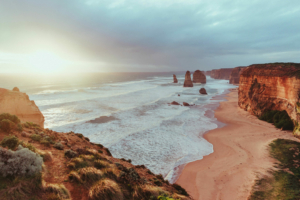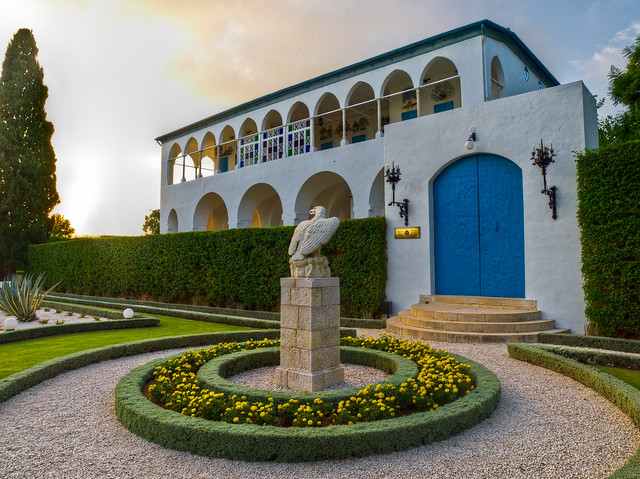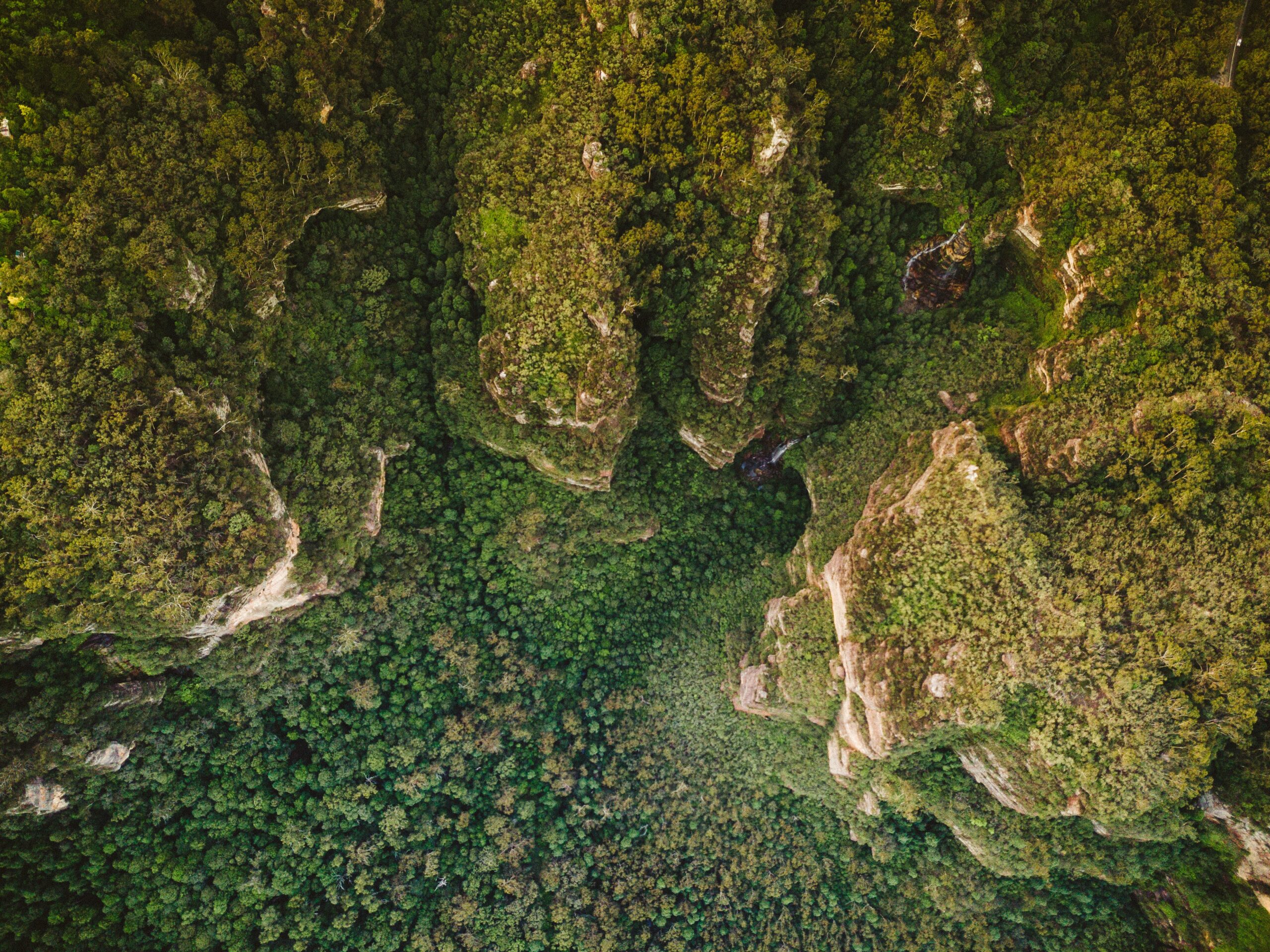Highlighting Australia
- As a proudly Australian initiative, we’re excited to showcase a collection of Australian stories, music, tributes and more.

Join activities, celebrations, study groups, spiritual empowerment and education programs for young people, and more.
Baha’i beliefs address essential spiritual themes for humanity’s collective and individual advancement. Learn more about these and more.


From the earliest times, pilgrimage has been a cherished part of human life, be it individual or collective. Whether it was the ancient Greeks making the arduous journey to Delphi to consult the Oracle, or the Frankish knights and their kings making crusade to “free” Jerusalem, Hindus making the journey to Varanasi to immerse themselves in the sacred waters of the Ganges or Buddhists to Kandy in Sri Lanka to revere the sacred tooth relic of Lord Buddha, many and diverse are the reasons for which men and women have undertaken the journey of pilgrimage, with its attendant trials and tests.
In the Bahá’í context, pilgrimage is a law ordained by Bahá’u’lláh in the Most Holy Book, the Kitáb-i-Aqdas. In this Book, Bahá’u’lláh prescribes that all Bahá’ís who are able should strive to make pilgrimage to one of the two Great Houses, i.e. the House of the Báb in Shíráz and the House of Bahá’u’lláh in Baghdád. However, after the passing of Bahá’u’lláh, ‘Abdu’l-Bahá designated the Shrine of Bahá’u’lláh at Bahjí as a place of pilgrimage, and stated that it is “obligatory” to visit these places “if one can afford it and is able to do so, and if no obstacle stands in one’s way”. Today, Bahá’ís make their pilgrimage at the invitation, and as honoured guests, of the Supreme Body of the Bahá’í Faith, the Universal House of Justice. The Shrines and other holy places are located in and around the cities of Haifa and ‘Akká in the Holy Land.
But what, our friends may ask, is the act of pilgrimage itself? What rites or rituals are involved? Before I continue, I should make it clear that each individual experiences their pilgrimage differently, and it is very personal. While sharing my thoughts and experiences in this post, it is not my intention to set certain expectations or a prescription of how people should feel while experiencing pilgrimage. My aim is to simply share some of my own thoughts and experiences in an attempt to answer, as simply as possible, the common question of “What is Baha’i pilgrimage?”
Bahá’í pilgrimage is simple but profound in its ultimate aim: to pay homage to the Twin Manifestations of the Faith and the Centre of the Covenant, and to visit Their Shrines. Bahá’u’lláh says: “The Qiblih is indeed He Whom God will make manifest; whenever He moveth, it moveth, until He shall come to rest.” The Shrine of Bahá’u’lláh is, therefore, the Qiblih (Point of Adoration) for Bahá’ís in every corner of the world to turn to during their Obligatory prayers, and the opportunity to visit this most holy Spot and pay homage is one to be deeply cherished.
While the Shrines of the Báb and Bahá’u’lláh are the pre-eminent places at which a lot of the Bahá’í pilgrim’s spend their time, there are also so many residences and resting places of the Holy Family, in addition to places visited by Bahá’u’lláh and ‘Abdu’l-Bahá, each with its attendant unique characteristics and each the site of significant events in Bahá’í history. Just one among them is the prison-barracks of ‘Akká, to which Bahá’u’lláh and His family were conducted upon their arrival in the penal colony. Bahá’u’lláh says: “Know thou that upon Our arrival at this Spot, We chose to designate it as the ‘Most Great Prison’. Though previously subjected in another land (Tihrán) to chains and fetters, We yet refused to call it by that name. Say: Ponder thereon, O ye endued with understanding!” To the unimaginable sufferings Bahá’u’lláh was made to bear in that grim place was added an indescribable loss: while pacing the roof of the barracks, rapt in his customary devotions one evening, ‘Abdu’l-Bahá’s beloved younger brother Mirzá Mihdí, 22, fell through an open skylight onto a wooden crate, which pierced his body and caused him to expire twenty-two hours later. There are so many such places to visit, and be drawn into the narrative of the lives of Bahá’u’lláh, His family and followers.
Another element to savour during pilgrimage is the opportunity to visit, enjoy and be inspired by the magnificent edifices, situated on Mount Carmel, the “Mountain of the Lord”, that constitute the Administrative Centre of the Faith. One cannot help but be struck with awe when gazing upon the four magnificent buildings on the Arc: the seat of the Universal House of Justice, the seat of the International Teaching Centre, the Centre for the Study of the Holy Text and the newly restored International Archives building. During the visit to the Archives, one has the great bounty to gaze upon the photograph of Bahá’u’lláh and portrait of the Báb, as well as the opportunity to view so many sacred relics and items of great significance in Bahá’í history, for example some of the clothing of Bahá’u’lláh, and even the sword of Mulla Husayn.
Apart from paying homage and drawing close to the Central Figures of the Faith, pilgrimage also offers the opportunity to come into contact with, and bask in the love of The Supreme Body of the Faith, the Universal House of Justice. The meeting between the Universal House of Justice and the pilgrims offers at once an awe-inspiring glimpse of the majesty and greatness of this sacred Institution, as well as, for those of us who have the great blessing of service on an institution of the Faith, a shining example of the dignity and humility that such service as an individual member on Bahá’í institutions entails.
There is also the chance, through the numerous evening talks given by members of the Universal House of Justice and the International Teaching Centre, to become more intimately acquainted with the condition of the world and how the work of the 5 Year Plan seeks to alleviate the travails of humanity by using the power of the Word of God to transform individuals and build beautiful, vibrant communities working together in a spirit of service for the betterment of the world, and how this process is already in advanced stages in numerous, diverse parts of the planet. This serves to raise our awareness of the immense importance of this work, and is also a certain emotional and spiritual preparation, for when we leave the Holy Land and go back into our communities with renewed dedication and enthusiasm to continue our efforts.
Last but most definitely not least, is the opportunity to witness first hand the beauty and diversity of the Bahá’í family, some from places we never even knew existed, and to forge bonds of friendship and love during these most memorable days of our lives spent at the Most Holy places on earth. What greater proof of the truth of the Message of Bahá’u’lláh can there be? To visit the tiny cell into which He was thrown in the barracks of Akká, and then to witness this beginning of the unity of mankind, we cannot help but be assured of the ultimate triumph of the Cause, and the achievement of all its aims.
I have many friends who feel that they are not worthy of such a great bounty, and that they have not “earned” this great gift. Yet, as the days spent in those holy places go by, an understanding dawned on me: Pilgrimage is not a reward for services rendered; it is preparation and confirmation for a lifetime of service yet to be rendered. It is for this very reason that I feel if we are able, we should make every effort to go as soon as we can!
I have heard some say, “Do I really need to go?” “Can’t I ‘enjoy’ it from afar, by listening to stories told by returning pilgrims or by seeing the photos and by reading books?” “Is it really worth the effort and cost?” The answers to these questions are, of course, a personal matter. However, when we weigh the many pros against the few cons (if any), making the pilgrimage just seems… like the right thing to do.
"*" indicates required fields

We recognise their continuing connection to land, waters and community. We pay our respects to Aboriginal and Torres Strait Islander people and their cultures; and to elders both past and present.
The views expressed in our content reflect individual perspectives and do not represent authoritative views of the Baha’i Faith.

Visit the site of the
Australian Baha’i Community
and the Baha’i Faith Worldwide
Notifications
This is one of your best Blogs. I went on pilgramage in 1981 and it is still fresh in my mind. When I pray, I am there again. Thank you for a lovely Friday afternoon revisit to the place of my dreams and heart.
Jean Luhrs (October 10, 2012 at 1:46 AM)
Thank you for your encouragement Jean, and we’re so glad we could be a part of taking you back to that time and special place! 🙂
Naysan (October 10, 2012 at 2:37 AM)
I pray that I be able to go on pilgrimage again. It was truly heaven on earth.
Carol B. Sery (November 11, 2012 at 5:57 PM)
[…] the Bab as a holy day where work should be suspended, and for those Baha’is who are able to go on pilgrimage to the Holy Land in their lifetime, they have a special opportunity to pay their respects and say […]
The Shrine of the Bab and its Significance | Baha'i Blog (July 7, 2013 at 7:23 PM)
[…] Blog: What was the highlight for you during your year of service? Being able to go on pilgrimage during my service was incredible. Those were the most incredible days of my life. If I could, I […]
Holy Recollections: An Interview with Ian Huang | Baha'i Blog (September 9, 2013 at 9:30 PM)
I’m having trouble getting information about pilgrimage. I applied about 6 months ago and they’ve sent me e-mails saying that my name has come up and they have dates for me to choose from, but when I go to the website it tells me my browser doesn’t support javascript. I’m pretty sure my computer has the latest updates. The same thing happens when I use the library’s computer. I don’t know what to do. I’m frustrated with the bureaucracy of the Bahai faith! Any help you can give will be appreciated. Thank you.
Mike Ray (October 10, 2013 at 2:25 PM)
Hi Mike, I’m not sure there’s much we can do as we’re not the Pilgrimage office, but I suggest you email the Pilgrimage office and let them know that you can’t see the dates in your browser. I’m sure they can email you that information. I’ve never heard of anyone having problems with this before.
Naysan (October 10, 2013 at 1:57 AM)
Yeah, you’d think it would be that simple. I’ve e-mailed them three times and all they say is they don’t know what my problem is and tell my to go to the website that I can’t get to. Oh well, F#@k It, I guess I’m not supposed to go on pilgrimage. Thanks for letting me vent anyway.
Mike Ray (October 10, 2013 at 3:30 PM)
It would have been useful to add that there are two types of pilgrimage in Baha’ism, rather as in Shi’ite Islam. There are two hajj pilgrimages (the equivalent of the Muslim hajj to Mecca), which are to the two Houses, as you say. These are accompanied by very elaborate rituals set out by Baha’ Allah in his two Hajj tablets. Only one person has ever performed them, Nabil-i Zarandi. It is almost certain that there will never be a hajj to the House of the Bab again, unless hajj to a rebuilt house on that site is considered acceptable. Baghdad will depend on changes in the religio-political scene in Iraq and acquisition of the House by the Baha’is. The other pilgrimages correspond to those made to tombs of the Shi’ite imams or to Sufi shrines, especially those in North Africa. These are called ziyarat (with a long second ‘a’ in the Arabic plural and a short second ‘a’ in the singular, without the ‘t’, or with the ‘t’ in the Persian) or visitations. They do not have specific rituals. Even though the shrine of Baha’ Allah is considered the Baha’i qibla, pilgrimage to it is simply ziyarat, whereas pilgrimage to the Islamic qibla (the Ka’ba in Makka) is hajj.
Denis MacEoin (April 4, 2014 at 10:36 PM)